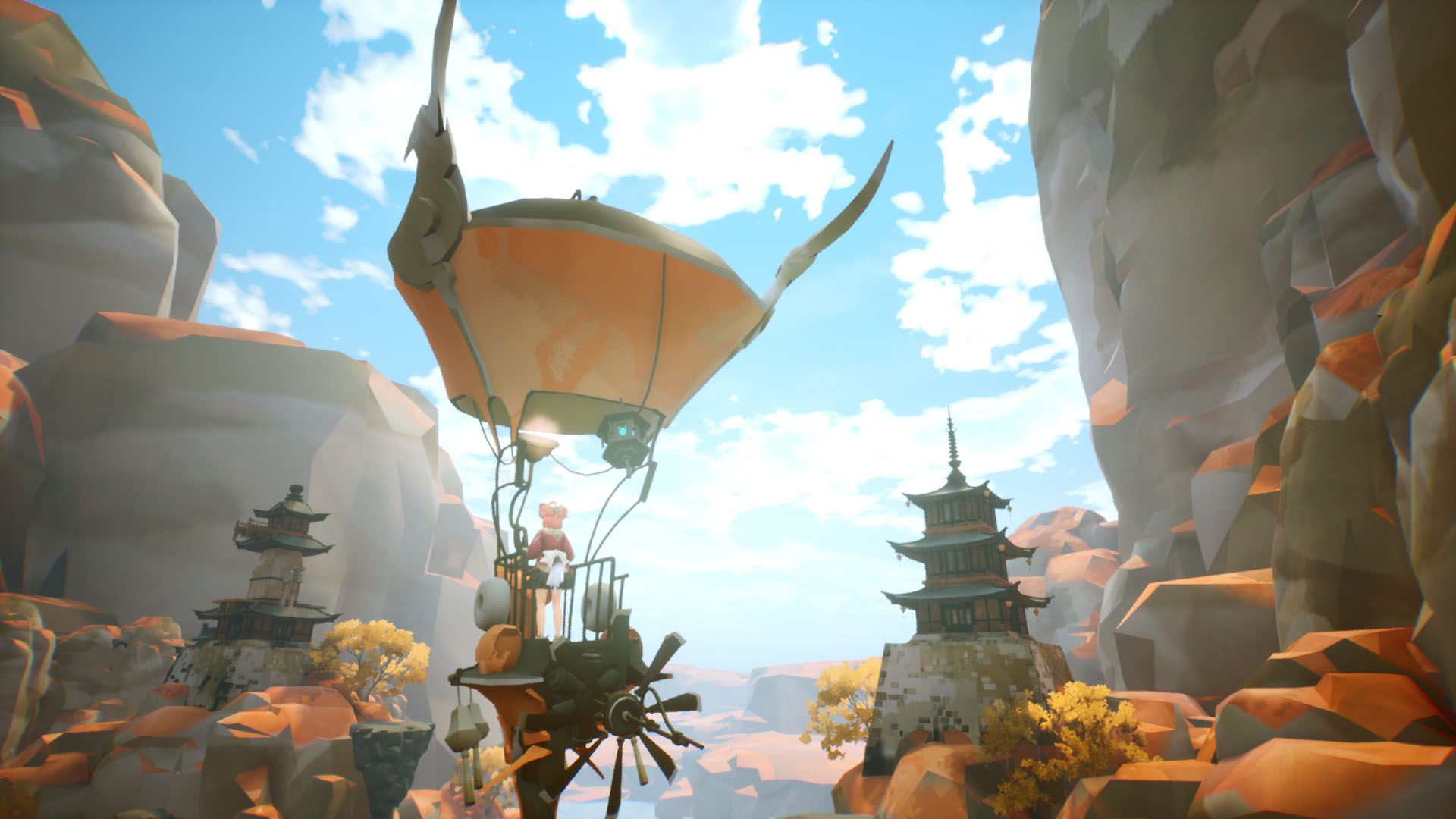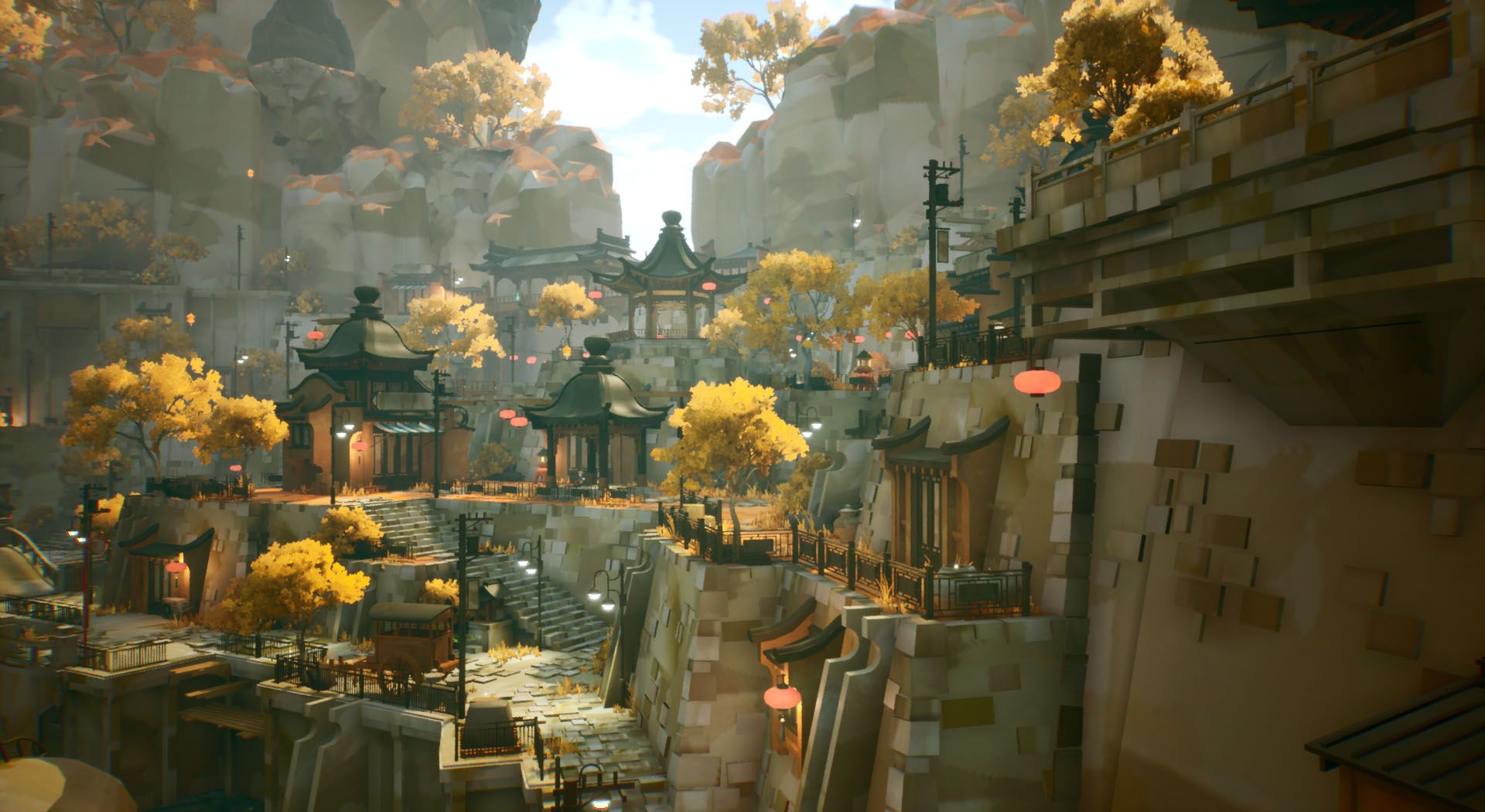Developed by prolific Japanese game artist Nocras through one-person studio Orbital Express, TASOMACHI: Behind The Twilight blends past work on titles like The Legend of Zelda: Breath of the Wild and Pokémon Sword & Shield to create a quiet, open-world collect-a-thon that values atmosphere over blistering challenge. It was initially published by indie PC gaming platform Playism before seeing a wider release on Steam and GOG on April 14.
TASOMACHI: Behind the Twilight puts players in the role of Yukumo, a young girl whose airship crashes in a mysterious land covered by the dark and foreboding Twilight Fog. With the help of a talking cat-like creature named Kogara, she has to journey across the various parts of the world to gather the “Sources of Earth,” and clear the fog by reviving the Sacred Trees scattered across the land.
Yukumo travels the world on foot, jumping and climbing across the landscape in search of Sources to open new pathways, unlock new towns to explore and repair her ship. Once it’s fully repaired, she can also fly around TASOMACHI’s various locations to collect Sources she couldn’t on the ground. After the fog is lifted in a given town, Yukumo will start to come across other villagers, who may give her a Source if she completes a simple task such as finding balloons or pulling posters off of walls. She can also come across books lying around that describe the lore behind the world and the origins of the Twilight Fog.
Trials within temples are usual solved via platforming, with Yukumo using her various skills to navigate the simple challenges on the way to the Sacred Trees - some of whichpresent difficult puzzle game challenges as the game goes on. Falling off a ledge typically means going back to the beginning of the course, but there are no limited lives or health bars to speak of. Players can even skip puzzles they find too difficult by paying a small sum of coins at a teleportation shrine, and given how liberally coins are scattered throughout the world, having enough is rarely a problem. As she goes about her adventure, Yukumo unlocks new abilities, like a drop move that lets her break platforms, a mid-air boost that can take some time to get the hang of, and a floating maneuver that basically counts as a double jump.
TASOMACHI’s art style takes cues from recent Zelda games, featuring a cartoon-style shading to go with the East Asian aesthetic. It's especially noteworthy in the contrast before and after a Sacred Tree is restored: at first, the town is filled with a dark and ominous fog, which is replaced with bright and warm sunshine when the curse is lifted. The soundtrack, provided by Japanese YouTube artist Ujico, features soothing techno that fits with the quiet tone of the game.
Players can save their progress by praying at special shrines throughout the world, but one potentially problematic aspect is the odd approach TASOMACHI takes to loading a game. To pick up a player's progress from where they left off, they have to select "Start" from the game's opening menu, while a "Format Save" option allows them to start over from the beginning. This is an unusual departure from the typical "Load Game" option and could lead to lost progress if a player isn't aware of it the first time.
TASOMACHI’s technical execution can be rough in certain respects, and more challenge-hungry players might be put off by the game's quieter collect-a-thon tone. However, those looking for something a bit more soothing might take interest in the colorful and calm world of TASOMACHI: Behind The Twilight.
TASOMACHI: Behind The Twilight is now available on Steam and GOG. Screen Rant was provided a Steam download code for the purpose of this review.



